October 2016
click here to access this newsletter as a text document.
Please remember the Essential Vermeer when you change your email address!
IN BRIEF:
exhibitions:
1. British Queen lends 22 paintings to the Mauritshuis including Vermeer's Music Lesson
2. Vermeer's Geographer visits the Hermitage
3. Major Vermeer exhibition planned for Dublin, Paris and Washington
4.
Vermeer's Woman Playing a Lute vacations in sunny Naples
5.
Vermeer's Woman in Blue Reading a Letter travels down under to Sydney
6.
Vermeer's A Lady Writing coming to the Chrysler Museum for a limited engagement
7.
Award-winning exhibition of Vermeer's contemporary, Cesar van Everdingen
publications:
8. Gary Schwartz rethinks Vermeer's relationship with Van Leeuwenhoek
9. Vermeer in detail, a new monograph by Gary Schwartz
10. In-depth book about Vermeer's painting technique by Jonathan Janson
11.
Catalogue for The Hague Vermeer-related exhibition
12. Catalogue of major Vermeer exhibition
in the news:
13. Anton-Ulrich Museum in Brunswick reopens 23 October
14. Mobster thought to know of location of Vermeer's stolen Concert nears death
1.
British Queen lends 22 paintings to the Mauritshuis including Vermeer's Music Lesson
At Home in Holland: Vermeer and his Contemporaries from the British Royal Collection
Mauritshuis, The Hague
29 September, 2016–8 January, 2017
https://www.mauritshuis.nl/en/press/persarchief/2016/installatie-vermeer/
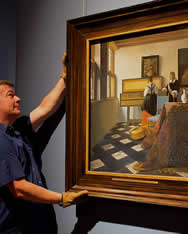
from Mauritshuis press release:
From 29 September, 2016 to 8 January, 2017 the Mauritshuis in The Hague will exhibit a selection of the most important Dutch genre paintings from the British Royal Collection. The star of the exhibition is The Music Lesson by Vermeer.
The exhibition covers a broad selection of the best Dutch genre paintings It includes 22 paintings from the British Royal Collection and one from the Mauritshuis, The Young Mother by Gerrit Dou. This painting was part of the British Royal Collection until about 1700, and came into Dutch ownership through King and Stadholder William III. Other than Vermeer's Music Lesson and Jan Steen's A Woman at her Toilet, the exhibition also features significant works by other grand masters of Dutch genre painting, such as Gerrit ter Borch, Gerrit Dou, Pieter de Hooch, Willem van Mieris and Gabriël Metsu.
catalogue:
The exhibition is accompanied by a richly illustrated catalogue in both English and Dutch, published by Royal Collection Trust, the Mauritshuis and Mercatorfonds. The catalogue was written by the exhibition's curators, Desmond Shawe-Taylor (Surveyor of the Queen's Pictures, Royal Collection Trust) and Quentin Buvelot (Senior Curator at the Mauritshuis). Masters of the Everyday: Dutch Artists in the Age of Vermeer is currently available in the shop at the Mauritshuis.
Masters of the Everyday: Dutch Artists in the Age of Vermeer
ISBN 978 94 6230 104 7
(price: €29,95)
Vermeer en zijn tijdgenoten: Hollandse genrestukken uit de Royal Collection
ISBN 978-94-6230-102-3
contact::
Natalie Bos, Mauritshuis
+31 (0)70 302 3438 / +31 (0)6 1444 8460
pressoffice@mauritshuis.nl / mauritshuis.nl
2.
Vermeer's Geographer visits the Hermitage
Johannes Vermeer: The Geographer. From the Städelsches Kunstinstitut (Frankfurt
am Main)
Masterpieces from the World's Museums in the Hermitage
Hermitage, St. Petersburg (Main Museum Complex, Hall of the School of Rembrandt\)
August 27–November 20, 2016
https://www.hermitagemuseum.org/wps/portal/hermitage/what-s-on/temp_exh/2016/geographer/?lng=
After The Love Letter in 2010, Vermeer's Geographer will be on temporary loan at the Hermitage.
from Hermitage press release:
When speaking of the history of Vermeer's remarkable picture, which over the course of the centuries changed hands on multiple occasions and spent time in several European countries, mention must be made of one intriguing, albeit brief "Russian" episode. The memory of it is preserved by an oval stamp inscribed "GALERIE DE SAN DONATO" on the back of the canvas, and a half-erased mark made with sealing-wax on the stretcher. Also attached to the back of the painting is a sheet of paper carrying a detailed list of the collections through which it passed between 1713 and 1872. Around 1877, The Geographer was bought in Paris by the Russian businessman and art patron Pavel Pavlovich Demidov (1839–1885). After inheriting the famous Villa San Donato outside Florence from his uncle, he settled in Italy. There the connoisseur enlarged through his own purchases the art collections assembled by several generations of Demidovs. Soon, though, as early as 1880, Pavel Pavlovich decided to sell the villa and its treasures and to move to a new estate, Pratolino. On 15 March, 1880, a tremendous auction began at San Donato that went on for several days. The Vermeer was Lot 1124 in the auction catalogue.
curator:
The exhibition has been curated by Irina Alexeyevna Sokolova, Doctor of Culturology, Keeper of Dutch Painting and Chief Researcher in the Department of Western European Art. Sokolova is the author of The Russian Passion for Dutch Painting of the Golden Age. The Collection of Pyotr Semenov and the Art Market in St Petersburg, 1860–1910 comes out in the Netherlands (2015)
catalogue:
A scholarly publication in Russian only, Johannes Vermeer: The Geographer (State Hermitage Publishing House, 2016) has been produced for the exhibition. The text is by Irina Sokolova.
3.
Major Vermeer exhibition planned for Paris, Dublin and Washington
Vermeer and the Masters of Genre Painting: Inspiration and Rivalry
20 February–22 May, 2017
Musée du Louvre, Paris
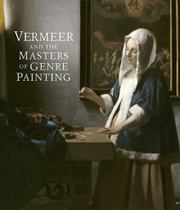
The Musée du Louvre, Paris, the National Gallery of Ireland, Dublin and the National Gallery of Art, Washington, are staging a landmark exhibition that explores the network of relationships among Dutch genre painters of the period 1650–1670, Vermeer and the Masters of Genre Painting: Inspiration and Rivalry.
The exhibition will afford visitors and scholars insights into how Vermeer and contemporary painters of scenes of everyday life admired, inspired and rivaled each other.
Affluent Dutch citizens, who styled themselves as liefhebbers (lovers of art), were expected to be able to compare paintings, recognize artists' hands and point out stylistic and thematic borrowings from other artists. This exhibition invites visitors to take on the role of seventeenth-century art lovers and compare small groups of paintings that reflect the cross-currents of inspiration. Visitors will also be able to observe how each artist had a particular ways of inserting and disguising his borrowings, attempting to surpass the others in verisimilitude, technical prowess and aesthetic appeal. This vibrant artistic rivalry contributed to the exceptionally high quality of their combined oeuvre.
The exhibition and accompanying catalogue benefits from an extensive research program. A website is currently being developed in collaboration with the Netherlands Institute for Art History (RKD), The Hague.
About ten Vermeer paintings will be exhibited. Thus far announced are:
- The Milkmaid
- Woman with a Balance
- Woman with a Pearl Necklace
- A Lady Writing
- The Astronomer
- The Geographer
- Lady Writing a Letter with her Maid
- The Lacemaker
- Allegory of Faith
- A Lady Seated at a Virginal
The exhibition's curatorial team is comprised of Adriaan E. Waiboer, Curator of Northern European Art, National Gallery of Ireland, Dublin; Arthur K. Wheelock Jr., Curator of Northern Baroque Painting, National Gallery of Art, Washington; and Blaise Ducos, Curator of seventeenth-and eighteenth-century Dutch and Flemish paintings, Musée du Louvre, Paris.
catalogue:
Enlivened with 180 superb illustrations, Vermeer and the Masters of Genre Painting: Inspiration and Rivalry highlights the relationships–comparative and competitive–among Vermeer and his contemporaries, including Gerrit Dou, Gerrit ter Borch, Jan Steen, Pieter de Hooch, Gabriel Metsu, and Frans van Mieris.
website:
The exhibition partners, in collaboration with the Netherlands Institute for Art History (RKD) have undertaken a research project addressing the interconnectivity between the seventeen principal genre painters and their works of art. Lead by the National Gallery of Ireland, the aim of the project is to share the research results with the public on a website, which will be launched with the opening of the first venue of the exhibition in the Musée du Louvre in February, 2017.
The website will chart and illustrate painters' responses to each other's stylistic and thematic innovations. A technical research project, led by Melanie Gifford, Conservation Scientist at the National Gallery of Art, will examine the exchanges of painting techniques and materials among Dutch genre painters of the period 1650–1675.
film:
A documentary film, entitled, Vermeer - The Man His Time His World is currently in production. It will be released in 2017 as one of the events associated with the National Gallery of Ireland's exhibition. The film is directed by Jean-Pierre Cottet and produced by James Mitchell, as a co-production between iO Production (Paris) and Soho Moon Pictures (Dublin), with the support of Arté in France, PBS in USA, and RTÉ, Ireland's public service broadcaster. It will be broadcast on RTÉ One Television next summer to coincide with the exhibition during its run in Ireland.
other exhibition venues:
National Gallery of Ireland, Dublin
17 June–17 September, 2017
http://www.nationalgallery.ie/en/Exhibitions/Upcoming/Vermeer.aspx
National Gallery of Art, Washington D.C.
22 October, 2017–21 January, 2018
4.
Vermeer's Woman with a Lute travels to Naples
Naples, Pinacoteca di Capodimonte
21 November–9 February, 2016
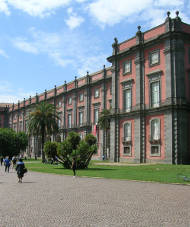
Vermeer's Woman with a Lute will be loaned by the Metropolitan Museum of Art to Pinacoteca di Capodimonte in Naples. To highlight the artistic relationships between the Netherlands and Italy in the seventeenth century various works from the museum's collection of analogous subject matter will be shown. These include three representations of Santa Cecilia, the patron of musicians, by the Italian painters Bernardo Cavallino, Carlo Sellitto and Francesco Guarino.
5.
Vermeer's Woman in Blue Reading a Letter travels down under to Sydney
Rembrandt and the Dutch olden Age: Masterpieces from the Rijksmuseum
Art Gallery of New South Wales, Sydney
11 Nov 2017–18 Feb 2018
https://www.artgallery.nsw.gov.au/exhibitions/rembrandt/
from the gallery website:
The
Rembrandt and the Dutch Golden Age exhibition at the Gallery is devoted to the greatest Dutch painters of the seventeenth century and the flourishing artistic culture of the time.
This is a rare opportunity for Sydney audiences to experience many outstanding works by Rembrandt, Vermeer, Ruisdael, Hals, Steen, Dou, Lievens and Leyster—each masters of their respective genres—drawn from the Rijksmuseum.
Rembrandt and the Dutch golden age presents a richly unfolding panorama of Dutch society in an era of unparalleled wealth, maritime power and cultural confidence. Vivid and compelling, the paintings encompass the tranquil Dutch landscape, the colorful life of the cities, Dutch society and morality, ships on the high seas and the characterful people who made the Dutch Republic such a success.
6.
Vermeer A Lady Writing coming to the Chrysler Museum for a limited engagement
Chrysler Museum, Norfolk
November 1–December 18, 2016
http://www.chrysler.org/exhibitions/johannes-vermeer/
from the museum website:
For a limited six-week engagement Vermeer's A Lady Writing will be on display at the Chrysler Museum of Art. It is being lent to the Chrysler by the National Gallery of Art in Washington, D.C.
"The beguiling expression of the young lady is the result of Vermeer's meticulous care in composition and pose," says Lloyd DeWitt, the Chrysler Museum's Chief Curator and Irene Leache Curator of European Art. "Adorned in the fashionable style of the day—hair ribbons, pear-drop pearl earrings, and a fur-trimmed jacket—she meets our gaze with a slight smile while writing a letter" he says. "The nib of her quill pen is still on the paper."
This painting will be on view in Gallery 202 of the Dalis Foundation Galleries.
admission: free.
related programs:
Special Vermeer Lecture
by Arthur K. Wheelock, Jr.
Sunday, November 20 | 2 p.m. | Kaufman Theater | Free
Revel in the beauty of Johannes Vermeer's A Lady Writing, one of only 35 works by the venerable seventeenth-century Dutch painter. Arthur K. Wheelock, Jr., Curator of Northern Baroque Paintings at the National Gallery of Art, guides you through the old master's work in this very special Kaufman Theater lecture. Seating is limited.
Vermeer Gallery Talk
by Chief Curator Lloyd DeWitt
Thursday, December 8 | 2 p.m. | free
Look deeper into the subjects and the psyches in Johannes Vermeer's paintings in this very special gallery talk by our resident expert in seventeenth-century Dutch art, Lloyd DeWitt. Meet at the Welcome Desk in Huber Court.
7.
Award-winning exhibition of Vermeer's contemporary, Caesar van Everdingen.
Painting Beauty - Caesar van Everdingen (1616/1617–1678)
24 September, 2016–22 January, 2017
Stedelijk Museum Alkmaar, Alkmaar
https://stedelijkmuseumalkmaar.nl/en/current-exhibitions/temporary-exhibitions/painting-beauty
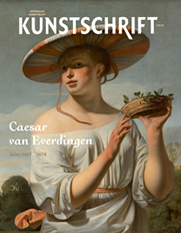
Perhaps not all Vermeer devotees are familiar with the work of the Dutch history painter Caesar van Everdingen, but it is likely that Vermeer was very much so. Although it has not survived, art historians, believe that the large-scale painting of Cupid that once appeared four of Vermeer's interiors was probably by his hand (a Cupid was listed among the personal art collection of Maria Thins Vermeer's mother-in-law). Certainly, Van Everdingen's exceptional technique could not have been lost on Vermeer and perhaps works of such exquisite intimacy and formal perfection, A Young Woman Warming her Hands over a Brazier: Allegory of Winter, struck a particularly sympathetic chord with the Delft master.
After four hundred years after his birth Stedelijk Museum Alkmaar presents the first monographic exhibition of Van Everdingen, whose "flattering brush" allowed him to capture on canvas the softness of velvet, the sleekness of fur and the sheen of fabrics in his impressive history paintings and civic guard portraits. The exhibition brings together works by Van Everdingen from Dutch and foreign museums and private collections to Alkmaar as well as the Rijksmuseum's recently purchased Young Woman in a Broad-Brimmed Hat. Other keys works will be lent by museums in Dresden and Stockholm especially for this occasion. Venus from The Hague will be reunited with Adonis from Cape Town. A recently discovered painting of a sensual peasant woman from a Russian private collection will also be on display.
The museum has won the prestigious Dutch Turing Award II for the exhibition concept.
exhibition catalogue (available in Dutch and English)::
Christi M. Klinkert and Yvonne Bleyerveld (eds.), Caesar van Everdingen (1616/1617–1678): Painting Beauty, exh. cat. Stedelijk Museum Alkmaar, Alkmaar/Zwolle (Waanders Uitgevers) 2016,
ISBN 978 94 6262 108 4
8.
Gary Schwartz rethinks Vermeer's relationship with Van Leeuwenhoek
"Today in Delft 340 Years ago"
by Gary Schwartz
https://garyschwartzarthistorian.com/2016/09/30/348-today-in-delft-340-years-ago/
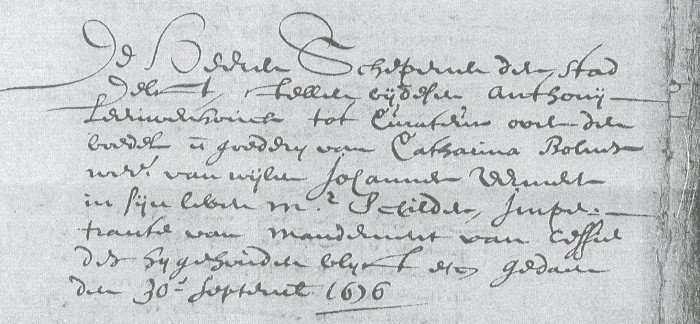
In a thought provoking article the art historian Gary Schwartz rethinks what he calls the "romanticized" relationship between Vermeer and his contemporary lens-maker and inventor of the microscope Antonie van Leeuwenhoek, and takes issue with the artist's use of the camera obscura.
9.
New in-detail Vermeer monograph by Gary Schwartz

Vermeer in Detail
by Gary Schwartz
March 2017
288 pp., clothbound
32 x 25 cm.
A low-threshold, high-level introduction to Vermeer based on 140 large and lavish details from his work. Each is provided with commentary, covering subject matter, technique and modes of picture-making, the origins of the objects he paints, comparisons of motifs, scholarly discussion concerning his work and more.
Concise entries and illustrations of the 37 paintings currently given to Vermeer, including the disputed attributions. Preceded by a capsule biography.
Purchase of the volume provides the buyer with exclusive access to a website with high-resolution images of the complete paintings.
price:
€39.90
languages:
Dutch (Ludion, Antwerp), French (Hazan, Paris) and English (UK: Thames & Hudson, London - US: Abrams, New York)
10.
In-depth publication about Vermeer's painting technique by Jonathan Janson
Looking Over Vermeer's Shoulder: Seventeenth - Century Painting Techniques and Studio Practices With Particular Focus On the Work of Johannes Vermeer (second edition)
by Jonathan Janson
January, 2020
+ 300 color illus.
Pdf: click here
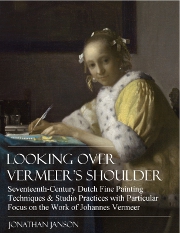
Who would have not wanted to look over the shoulders of one of the greatest painting technicians of Western art while he was at work?
The second edition of Looking Over Vermeer's Shoulder is the comprehensive, fully illustrated study of the materials, techniques and pictorial tactics of Johannes Vermeer and his most technically advanced colleagues. It can be read by painters, art historians and laymen who are interested in the mysteries of how great artists transform inert material into great works of art.
In the first section, an in-depth investigation sheds new light not only the artist's unique treatment light, color, composition, drawing and perspective but how he depicted some of the most defining motifs of his interior, such as marble floor tiles, wall maps, drapery and white-washed walls. Detailed information is given about the artist's studio environment, how he devised his perfectly balanced scenes and how he was inspired by and made practical use of the camera obscura.
In the second section, each passage of Vermeer's multi-step method is unraveled in the order one might encounter them in the painting process. This allows the reader to follow how the artist built up his images during the months of unremitting attention to every aspect of the painting process, from the stretching of his fine-woven linen canvas to the final touches and glazes.
While carefully analyzing of all know data regarding Vermeer's painting procedures—with the aid of hundreds of full color images and diagrams—the author combines his life-long study of Vermeer's art and his qualifications as a trained painter to produce an intimate, three-dimensional view of the painter..
review:
Vermeer's studio techniques will naturally become a subject of further curiosity for readers who are painters themselves. In this case, the "must-read" follow up is Jonathan Janson's ebook Looking Over Vermeer's Shoulder, self-published earlier this year. The subtitle alone—Seventeenth Century Dutch Fine Painting Techniques and Studio Practices with Particular Focus on the Work of Johannes Vermeer—suitably enough indicates the scope of the book's contents as "a comprehensive resource regarding the materials, techniques and pictorial tactics of Johannes Vermeer and his most advanced colleagues." Janson is not himself a formal scholar, which is all the better; he is an artist with a BFA from Rhode Island School of Design (RISD) obsessed with the Dutch painter. He also runs the Essential Vermeer website that gathers and organizes virtually everything that's published on Vermeer and posts interviews with top Vermeer scholars.
—"Getting Closer to Vermeer with Three New Books on the Artist," Rob Colvin, July 28, Hyperallergic, 2016 http://hyperallergic.com/302360/getting-closer-to-vermeer-with-three-new-books-on-the-artist/
11.
Catalogue for The Hague Vermeer-related exhibition

Masters of the Everyday: Dutch Artists in the Age of Vermeer
(Vermeer en zijn tijdgenoten: Hollandse genrestukken uit de Royal Collection)
ISBN 978-94-6230-102-3
ISBN 978 94 6230 104 7
176 pages
11.5 x 0.9 x 9 inches
2015
The exhibition At Home in Holland: Vermeer and his Contemporaries from the British Royal Collection is accompanied by a richly illustrated catalogue in both English and Dutch, published by Royal Collection Trust, the Mauritshuis and Mercatorfonds. The catalogue was written by the exhibition's curators, Desmond Shawe-Taylor (Surveyor of the Queen's Pictures, Royal Collection Trust) and Quentin Buvelot (Senior Curator at the Mauritshuis). Masters of the Everyday: Dutch Artists in the Age of Vermeer is currently available in the shop at the Mauritshuis.
price: €29,95)
review:
Masters of the Everyday is splendid, featuring comprehensive, lavishly illustrated entries on twenty-seven beautiful pictures by some of the most outstanding Dutch masters of the seventeenth century
—
HNA Review of Books, Historians of Netherlandish Art, 2016-05-16)
12.
Catalogue for major Vermeer exhibition
Vermeer and the Masters of Genre Painting: Inspiration and Rivalry
by Adriaan E. Waiboer, with Arthur K. Wheelock Jr. and Blaise Ducos

from the Yale University Press website:
The genre painting of the Dutch Golden Age between 1650 and 1675 ranks among the highest pinnacles of Western European art. The virtuosity of these works, as this book demonstrates, was achieved in part thanks to a vibrant artistic rivalry among numerous first-rate genre painters working in different cities across the Dutch Republic. They drew inspiration from each other's painting, and then tried to surpass each other in technical prowess and aesthetic appeal.
The Delft master Johannes Vermeer is now the most renowned of these painters of everyday life. Though he is frequently portrayed as an enigmatic figure who worked largely in isolation, the essays here reveal that Vermeer's subjects, compositions, and figure types in fact owe much to works by artists from other Dutch cities. Enlivened with 180 superb illustrations, Vermeer and the Masters of Genre Painting highlights the relationships—comparative and competitive—among Vermeer and his contemporaries, including Gerrit Dou, Gerrit ter Borch, Jan Steen, Pieter de Hooch, Gabriel Metsu, and Frans van Mieris.
authors:
Adriaan E. Waiboer is curator of northern European art at the National Gallery of Ireland. Arthur K. Wheelock Jr. is curator of northern baroque paintings at the National Gallery of Art, Washington. Blaise Ducos is curator of seventeenth- and eighteenth-century Dutch and Flemish paintings at the Musée du Louvre.
March 28, 2017
320 pages, 9 1/2 x 11 1/2
180 color illus.
ISBN: 9780300222937
Hardcover: $60.00
Published in association with the National Gallery of Ireland
13.
Anton-Ulrich Museum in Brunswick reopens 23 October
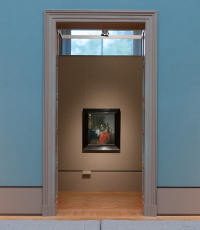
from PRESSPORTAL:
On October 23, 2016, the Anton-Ulrich Museum in Braunschweig will reopen one of the 20 most important and oldest art museums in Germany after seven years of renovation. The museum houses 4,000 works of art, which comprise a range of impressive 3000 years of art history, including works by Rubens, Rembrandt, Cranach, Dürer, Holbein, Elsheimer, Giorgione, Palma Il Vecchio, Veronese, Rosso Fiorentino, Permoser, Goya as well as Vermeer's Girl with a Glass of Wine.
Within the framework of the largest cultural project of the state of Lower Saxony over the past 20 years, a total of 35.6 million euros has been invested in the expansion and renovation of the traditional house, which took place in two phases of construction. The measure was necessary because the museum building from 1887 was afflicted by obsolete technology, drastic damage in the building fabric and lack of space made a rehabilitation and expansion absolutely necessary. In the first phase of construction, a new functional building was erected behind the museum building, in which administration, depots, restoration workshops, copper stiches, library, as well as a museum café and new rooms for museum pedagogy are housed in the future. The old building was freed from retrofitted fixtures, gutted down to the shell, fundamentally renovated and equipped with modern exhibition technology.
The exhibition space has more than doubled, and in the future it will be able to present exhibitions covering a maximum of 900 m². Modern climate technology ensures that loans can also be borrowed from the large museums in New York, Paris, London or Rome. In addition to new, generous service areas, a museum shop, a 250 m² event space and 150 m² space for museum-educational events have also been added—all nowadays completely self-evident offers of a modern, visitor-oriented museum.
For seven days, between the 23rd and 30th June, October (except Mondays) the museum celebrates the reopening with an entry-free "Open House Week."
14.
Mobster Thought to Know Location of US's Biggest Art Heist Loot Is Near Death
drawn from:
"
Mobster Thought to Know Location of US's Biggest Art Heist Loot Is Near Death," October 3, 2016
by
Caroline Elbaor (artnet News)
As time passes, the chances of recovering Vermeer's Concert stolen in the 1992 in the greatest art heist of all time looks as dim as ever.
Caroline Elbaor of artnet news reports that Robert Gentile, the mobster who has long been suspected to harbor knowledge on the whereabouts of the stolen art in the case of the Isabella Stewart Gardner Museum, is said to be near death, according to his attorney Ryan McGuigan.
To mark the 25th anniversary of the largest art theft in American history, the Isabella Stewart Gardner Museum has created a virtual tour of the 13 items, including paintings by Rembrandt and Vermeer, that were stolen from the museum on March 18th, 1990.
Regarding the heist, see ARTNEWS Sarah Cascone's article "Notorious Massachusetts Museum Heist to Become Hollywood Movie."
Gentile's attorney McGuigan maintains his client's innocence, saying in a statement to The Guardian. 'His story has never changed in the six years that I have represented him.'
Despite such claims, a 2012 search of Gentile's home uncovered a handwritten list of the stolen art, its estimated value and police uniforms, according to The Guardian. (Fake police uniforms were donned by the thieves during the looting.)
Gentile is privy to information regarding the works' whereabouts: "I told him that if there ever was a time to give up some information that you haven't yet, that I don't know, this would be it," he said.
Yet the likelihood of a deathbed confession seems slim, as the mobster continues to defend himself and his innocence. As artnet News previously reported, upon the FBI's most recent search of his home in May 2016, Gentile said, "They ain't gonna find nuttin."
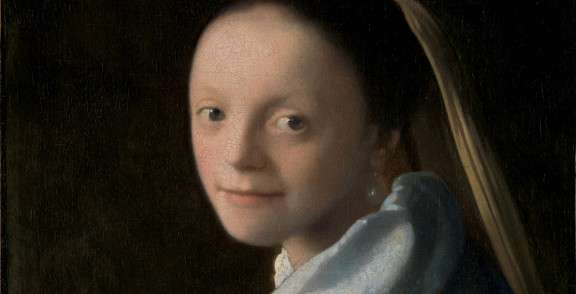



 or anything else that isn't working as it should be, I'd love to hear it! Please write me at:
or anything else that isn't working as it should be, I'd love to hear it! Please write me at: